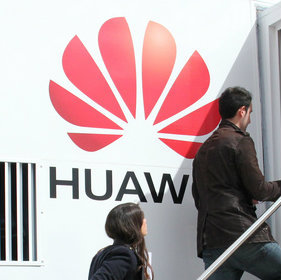ADN is a principle for building networks that adapt to the needs of the application, based on open components.

Huawei is pointing a gun straight at Cisco with a new strategy it's calling Application Driven Networking (ADN), designed to give comms networks the flexibility required for New IP applications.
Huawei Technologies Co. Ltd. announced its Application Driven Networking (ADN) without a lot of fanfare early last month. It sounds at first like a "me too" strategy that copies Cisco's similarly named Application Centric Infrastructure (ACI). (See Huawei Unveils Application-Driven Network Vision.)
But ADN is more than just a marketing campaign, as Ayush Sharma, senior VP and IP CTO for Huawei, explains it. It's an architecture that uses 5G principles to build networks with the flexibility needed for the different requirements of traditional voice, Internet and machine-to-machine communications.
While Cisco is building a virtual network overlay on top of MPLS and other traditional network components, Huawei is using open source, SDN, NFV and the 5G principles of network slicing to build programmable, network-agnostic networks on top of any media, including copper, fiber and wireless and LTE, Sharma tells Light Reading.
Carriers need to go beyond the old, simplistic definition of five-nines of reliability to meet the different demands of different kinds of applications, Sharma says.
For example, traditional voice networks follow the "Poisson distribution model," Huawei Fellow Wen Tong said in a statement. "Poisson Distribution" is a statistical model -- what it means for comms companies is that phone calls are likely to remain at a constant frequency and duration over time. This model is suitable for a hierarchical network architecture.
Internet communications follow a power-law distribution model, where most users are connected to central nodes.
And machine-to-machine communications comprises many different cases with greatly varying needs. For example, communications between connected cars requires extremely low latency. "In telemedicine, remote video systems require ultra-wide bandwidth, low latency and high reliability," Huawei says. "In this case, networks must create small systems locally and huge systems globally. The Markov distribution model supports network architecture with both distributed and centralized controls." (See How IoT Forked the Mobile Roadmap.)
These principles -- flexibility, applications driving technology and use of open components -- are hallmarks of New IP networks.
Huawei achieves the network flexibility required for the new generation of apps by dividing the network logically into the data plane, control plane and the services plane, where third-party applications such as the connected car, robotic surgery and drone control systems reside.
On the data plane (also known as the forwarding plane) the network uses programming languages such as Huawei's own Protocol Oblivious Forwarding, which is compatible with the industry standard P4, as well as OpenFlow, to forward traffic.
On the control plane, Huawei uses open protocols from ON.Lab 's ONOS and OpenDaylight to manage devices.
On the services plane, applications don't need to know anything about the underlying network complexity.
Want to know more about SDN? Visit Light Reading's SDN technology content channel.
"Earlier, these kinds of things were vertically integrated into a box," says Sharma. A router contained forwarding, control and some network applications. Now the forwarding and control plane are separate devices built using standardized components and the applications reside anywhere on the network.
An example of Huawei's ADN in action is AT&T Inc. (NYSE: T)'s Central Office Re-architected as Data Center (CORD), a scalable, white-box architecture designed to deliver services more economically than the current central office set-up, incorporating multiple single-function boxes. Huawei is partnering with AT&T on CORD. (See AT&T to Show Off Next-Gen Central Office and Ciena Offers Hardened ONOS for Next-Gen Central Office Conversions.)
For another example, a connected car needs to be able to receive software upgrades, bug fixes and send reports from sensors. "They don't care whether it's over a fixed connection, WiFi, SDN or NFV. They need to be connecting, need a certain QoS, they don't care about implementation," Sharma says.
— Mitch Wagner, 


 , West Coast Bureau Chief, Light Reading. Got a tip about SDN or NFV? Send it to [email protected].
, West Coast Bureau Chief, Light Reading. Got a tip about SDN or NFV? Send it to [email protected].
Read more about:
AsiaAbout the Author(s)
You May Also Like










